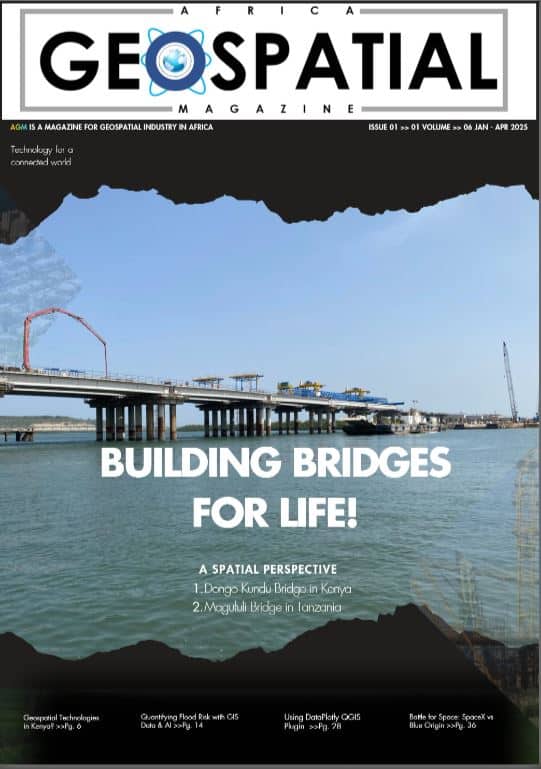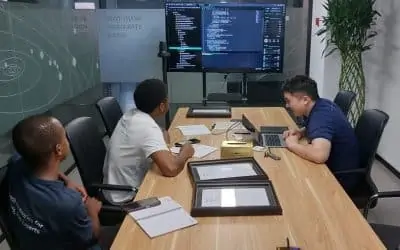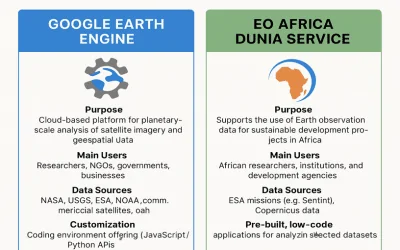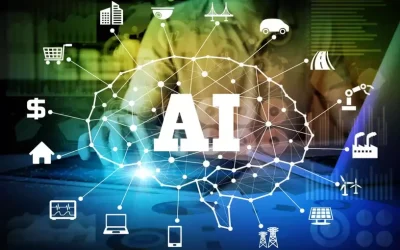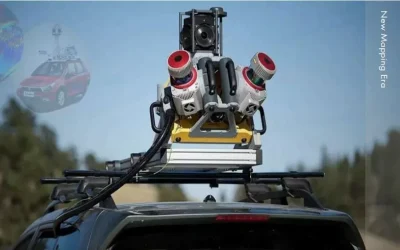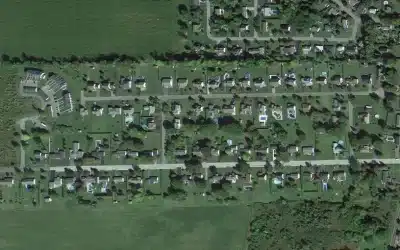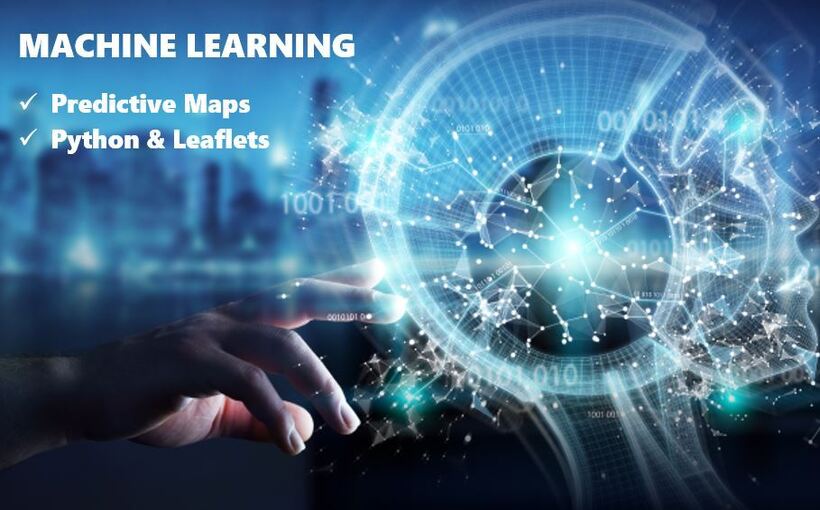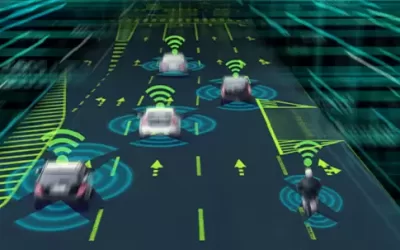Introduction
In today’s data-driven world, Machine Learning (ML) and Artificial Intelligence (AI) are revolutionizing the way we approach geospatial analysis. By applying ML and AI techniques to geospatial data, professionals can automate data analysis, enhance predictive capabilities, and uncover hidden patterns that traditional methods may overlook. This training course is designed to equip participants with the necessary skills to utilize machine learning and AI algorithms for advanced geospatial monitoring applications. Whether it’s for environmental monitoring, urban planning, or disaster management, this course will provide participants with the tools needed to harness the power of AI and ML to transform geospatial data into actionable insights.
Target Audience
This training course is intended for professionals across industries who want to integrate machine learning and AI into geospatial monitoring projects, including:
-
- Geospatial analysts
- Environmental scientists and researchers
- Urban planners
- GIS professionals
- Data scientists and data analysts
- Policy makers and government officials
- Professionals working in the fields of agriculture, forestry, and natural resource management
- Development and humanitarian organizations
- Remote sensing specialists
- Students or individuals interested in combining AI and GIS for innovative geospatial solutions
No prior experience with machine learning or AI is required, but a basic understanding of GIS concepts will be beneficial.
Course Objectives
Upon successful completion of this course, participants will be able to:
-
- Understand the Fundamentals of Machine Learning & AI in Geospatial Monitoring: Gain a strong foundation in how machine learning and AI are applied within the geospatial field for improved monitoring, analysis, and decision-making.
- Utilize ML & AI Algorithms for Geospatial Data Analysis: Learn how to apply machine learning algorithms like supervised and unsupervised learning, regression, and classification to geospatial data for pattern recognition and predictions.
- Process Geospatial Data with AI Models: Master the ability to preprocess geospatial data (remote sensing, satellite imagery, and sensor data) for use with AI models and machine learning techniques.
- Build Predictive Models for Geospatial Monitoring: Develop skills to create predictive models that can forecast trends, detect anomalies, and optimize monitoring processes for a wide range of applications, from environmental conservation to urban planning.
- Implement AI for Real-Time Geospatial Analysis: Understand how to apply AI and machine learning for real-time data processing and decision-making in geospatial monitoring projects, enhancing situational awareness and response times.
- Incorporate Remote Sensing Data for AI-Based Analysis: Learn how to integrate remote sensing data with AI to improve geospatial analysis for monitoring land use, vegetation changes, water bodies, and more.
- Automate Geospatial Data Analysis with AI Tools: Acquire the skills to automate time-consuming data processing tasks using AI tools, boosting efficiency and enabling faster decision-making in geospatial projects.
- Develop Visualizations of AI-Driven Insights: Learn to create dynamic maps, dashboards, and data visualizations that represent the insights gained through machine learning models, making it easier to communicate findings to stakeholders.
- Explore AI Applications in Disaster Risk Management & Environmental Monitoring: Understand how AI and machine learning can be used to enhance disaster risk assessment, climate change monitoring, and biodiversity conservation efforts.
- Apply Deep Learning to Geospatial Data: Explore advanced AI techniques such as deep learning and neural networks to analyze complex geospatial datasets like satellite imagery and LiDAR data.
- Optimize Resource Management with AI & GIS: Discover how AI-driven geospatial monitoring can optimize resource management in sectors such as agriculture, energy, water resources, and urban development.
- Master Data Integration for Machine Learning Applications: Learn how to combine data from multiple sources, such as GIS, remote sensing, IoT sensors, and databases, to feed into machine learning models for more accurate geospatial analysis.
By the end of this training course, participants will have the expertise to apply machine learning and AI techniques to solve complex geospatial monitoring challenges, optimize decision-making, and drive innovation in their respective fields.
Course Duration
10 Days
Course Content
Module 1: Introduction to Machine Learning & AI in Geospatial Analysis
-
- Overview of Machine Learning (ML) and Artificial Intelligence (AI) concepts
- Applications of ML and AI in geospatial monitoring
- Introduction to key algorithms and their roles in geospatial data analysis
- Challenges and opportunities in applying ML & AI to geospatial data
Module 2: Fundamentals of Geospatial Data
-
- Types of geospatial data (vector, raster, remote sensing data)
- Geospatial data sources: satellite imagery, LiDAR, and sensor data
- Preprocessing techniques for geospatial data
- Introduction to Geographic Information Systems (GIS) and spatial databases
Module 3: Introduction to Machine Learning Algorithms for Geospatial Data
-
- Supervised vs. unsupervised learning
- Regression, classification, clustering, and deep learning in geospatial analysis
- Key ML algorithms: Random Forest, Support Vector Machine (SVM), K-Nearest Neighbors (KNN), Neural Networks
- Practical applications in geospatial monitoring
Module 4: Data Preprocessing for Machine Learning
-
- Data cleaning techniques: handling missing values and outliers
- Feature engineering: creating meaningful variables from raw geospatial data
- Data normalization and scaling
- Splitting datasets for training, validation, and testing
Module 5: Remote Sensing Data and Machine Learning
-
- Using satellite imagery and aerial photography for geospatial monitoring
- Application of ML algorithms to analyze remote sensing data
- Image classification and feature extraction techniques
- Training and validation of remote sensing models
Module 6: Supervised Learning for Geospatial Analysis
-
- Applying supervised learning algorithms to geospatial datasets
- Classification techniques: Land cover classification, vegetation mapping, etc.
- Regression techniques: Predicting variables like elevation, temperature, or population
- Model evaluation and performance metrics
Module 7: Unsupervised Learning for Geospatial Clustering
-
- Clustering methods for spatial data analysis
- K-means clustering, DBSCAN, and hierarchical clustering
- Identifying patterns and clusters in geographical datasets
- Applications in urban planning, natural resource management, and environmental monitoring
Module 8: Deep Learning for Geospatial Analysis
-
- Introduction to deep learning models for geospatial data
- Convolutional Neural Networks (CNNs) for image analysis
- Recurrent Neural Networks (RNNs) for time-series geospatial data
- Building and training deep learning models for satellite imagery analysis
Module 9: Time-Series Data Analysis with Machine Learning
-
- Handling and analyzing time-series data in geospatial monitoring
- Forecasting and predicting future geospatial events using ML
- Anomaly detection in time-series geospatial data
- Real-time monitoring applications (e.g., climate change, deforestation, land-use change)
Module 10: AI for Real-Time Geospatial Monitoring and Decision-Making
-
- Real-time data processing with AI and machine learning
- Automating data analysis and predictions for faster decision-making
- Case studies of AI-driven real-time geospatial monitoring (e.g., disaster response, environmental monitoring)
- Integrating IoT sensors and geospatial data for smart city applications
Module 11: Geospatial Data Visualization and Storytelling with AI Insights
-
- Creating interactive visualizations of geospatial data insights
- Using GIS and AI tools for effective data storytelling
- Dashboard development for monitoring and reporting
- Communicating complex geospatial findings to stakeholders
Module 12: AI Applications in Environmental Monitoring
-
- AI for detecting environmental changes and trends
- Land use and land cover mapping using machine learning
- Predicting and mitigating climate change impacts with AI
- Case studies on AI-driven environmental conservation and sustainability
Module 13: AI and Machine Learning for Disaster Risk Management
-
- Using AI and machine learning for early warning systems
- Predicting natural disasters like floods, hurricanes, and wildfires
- Real-time disaster response and recovery with geospatial data
- Case studies on AI in disaster risk management
Module 14: Advanced AI for Geospatial Data Integration
-
- Integrating multiple geospatial data sources for AI analysis
- Data fusion techniques: combining remote sensing, LiDAR, and sensor data
- Creating comprehensive datasets for training machine learning models
- Data interoperability and sharing across platforms
Module 15: Practical Applications of AI and ML in Geospatial Monitoring
-
- Real-world case studies of machine learning and AI in geospatial applications
- Hands-on projects using popular AI/ML tools and libraries for geospatial analysis
- Best practices for applying AI and ML to geospatial data
- Career opportunities and emerging trends in AI for geospatial analysis
These modules provide a comprehensive roadmap to learning how machine learning and AI can be applied to geospatial monitoring and analysis. The course will help participants gain expertise in advanced AI techniques, making them well-equipped to handle the challenges in environmental monitoring, urban planning, disaster management, and beyond.
Training Approach
This course will be delivered by our skilled trainers approved by NITA who have vast knowledge and experience as expert professionals in the fields. The course is taught in English and through a mix of theory (10%), practical activities (40%), group discussion (20%) and case studies (30%). The course manuals and additional training materials will be provided to the participants upon completion of the training.
Tailor-Made Course
This course can also be tailor-made or customized to meet your organization’s requirement. For further inquiries, please contact us on: Email: [email protected], [email protected] or Tel: +254 719 672 296
Training Venue
The training will be held at our OGC Training Centre at Karen, Nairobi. We also offer training for a group at requested location all over the world. The course fee covers the course tuition, training materials, two break refreshments, and buffet lunch.
The Visa application, travel expenses, airport transfers, dinners, accommodation, insurance, and other personal expenses are catered by the participant.
Training Fee
KSh. 100,000 or USD 900
Certification
The participants will be issued with Orbital Geospatial College (OGC)’s NITA Approved Certificate upon completion of this course.




